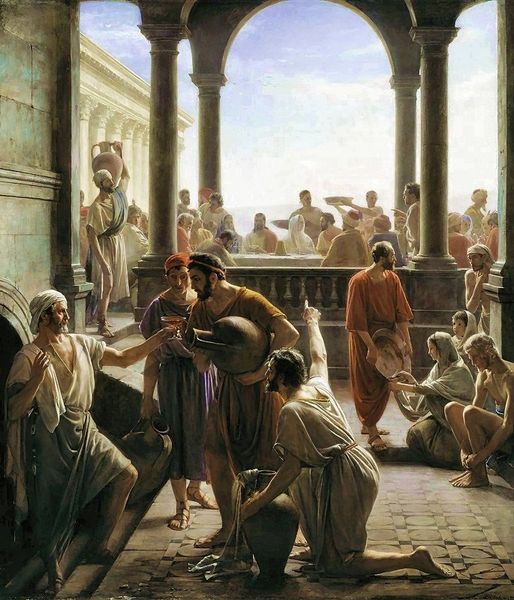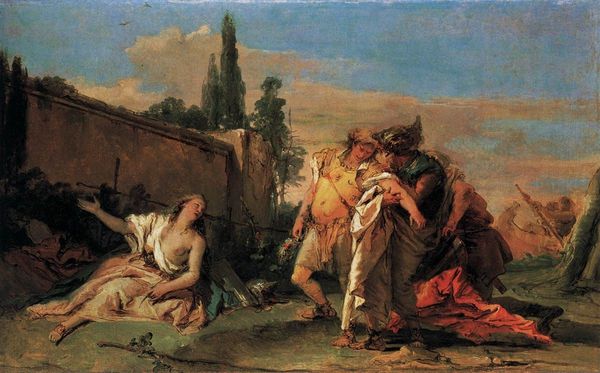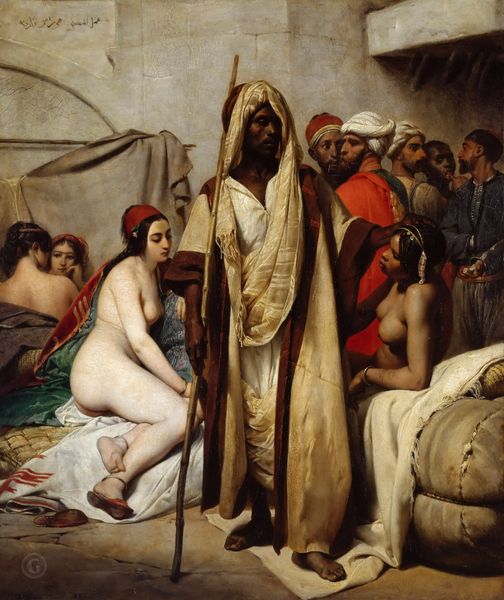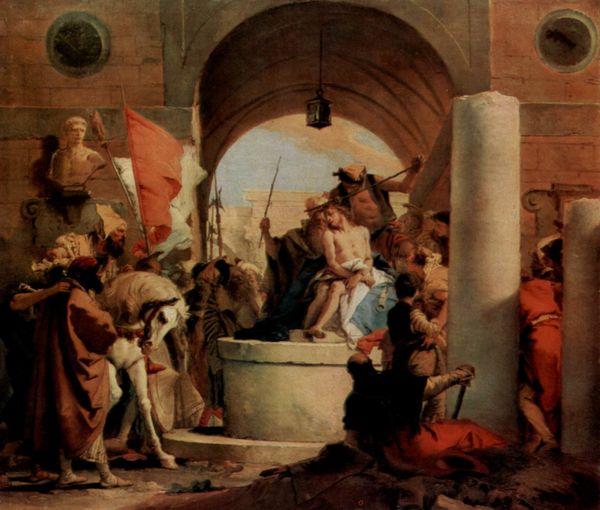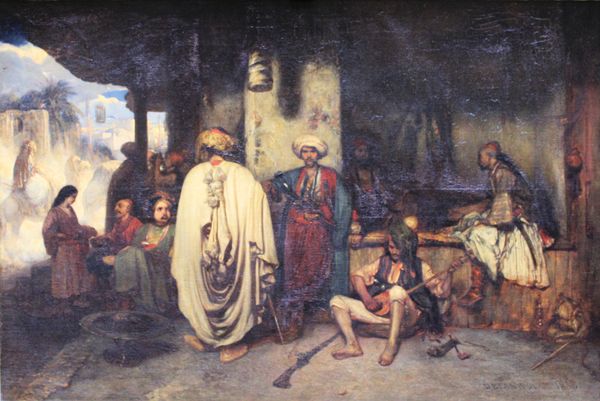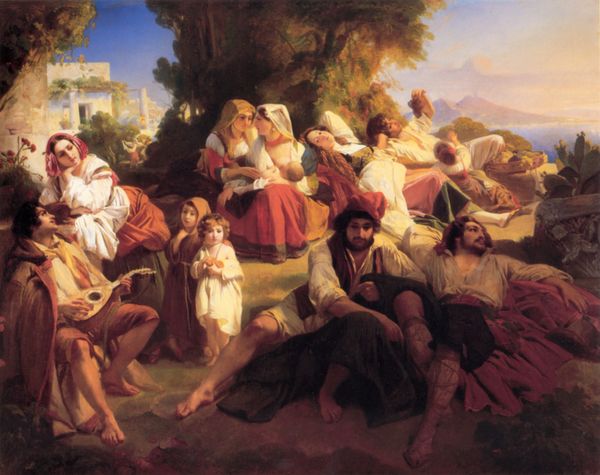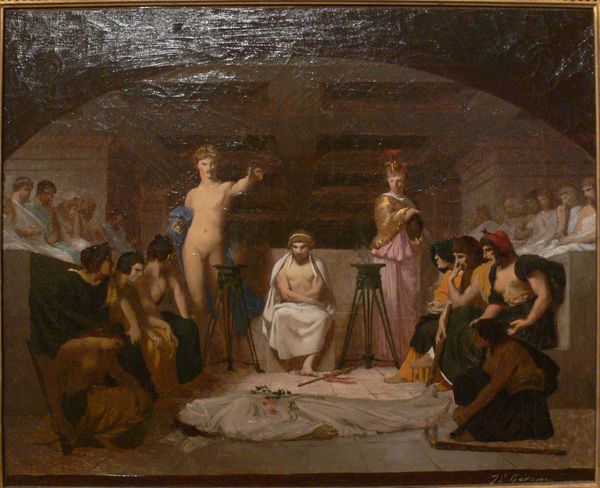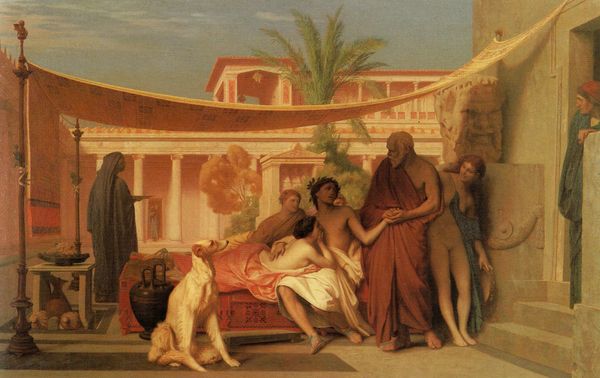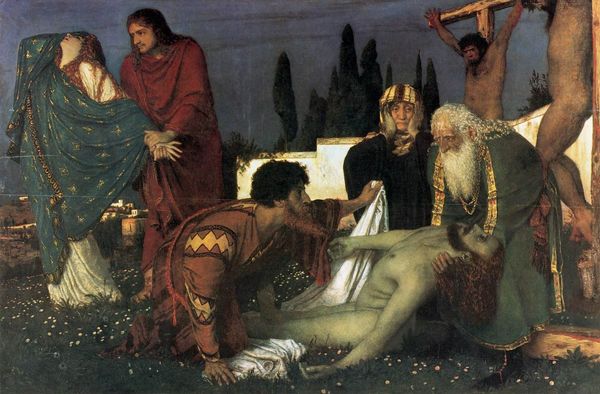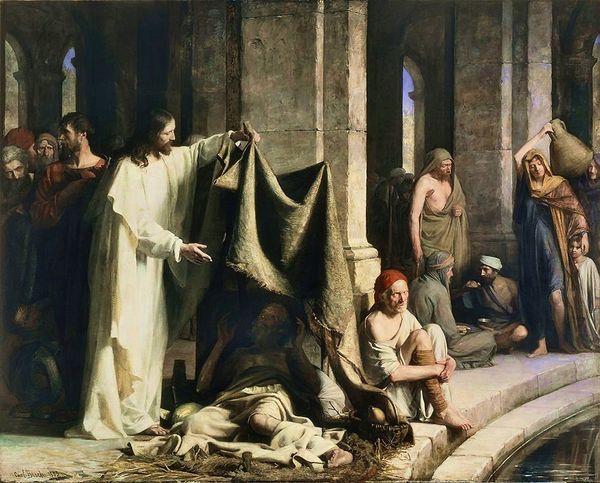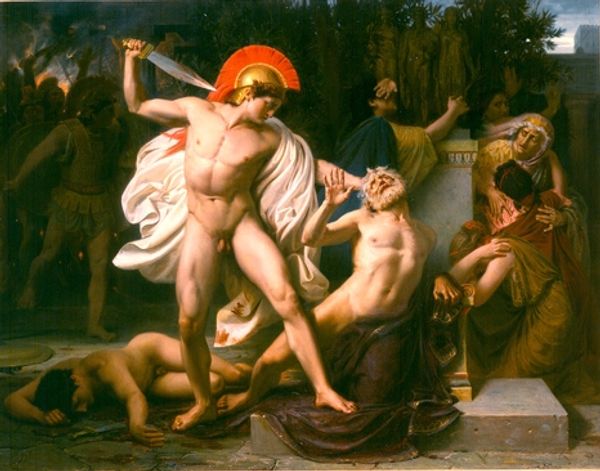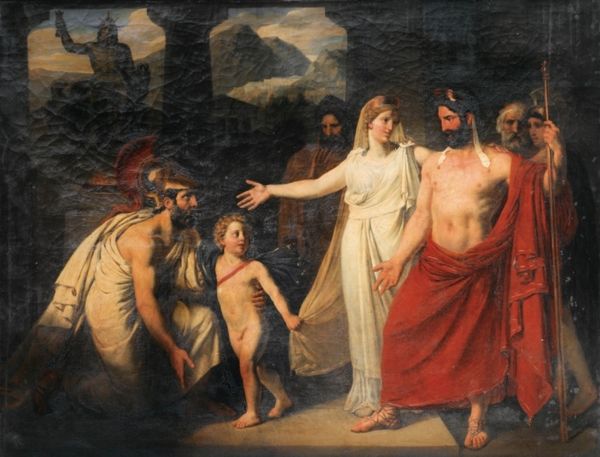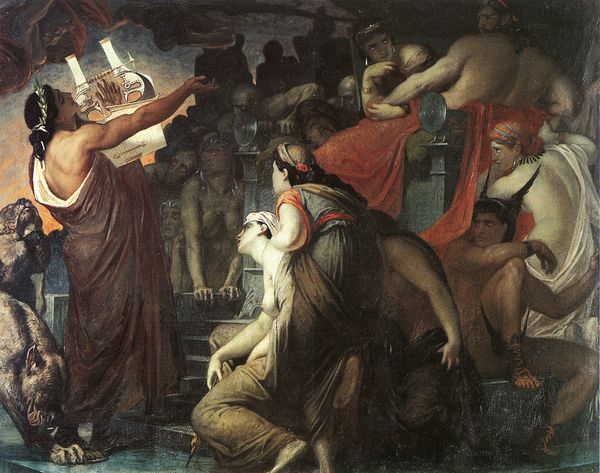
Copyright: Public domain
Editor: This is Gustave Boulanger's *The Slave Market*, painted in 1882, with oil on canvas. The gazes in this image are quite intense; they immediately make the viewer consider who they are, and why they are present. What kind of reading do you feel comes through in this composition? Curator: It’s fascinating how Boulanger utilizes the visual language of the 'Orient' to explore anxieties within French society. What symbols catch your eye? Editor: I'm drawn to the detached expressions of some figures, and the way the slave trader is so at ease. Curator: Indeed. Notice how Boulanger contrasts the draped figures on display, their bodies forming a sort of melancholic tableau, with the seated figure, who embodies classical Roman indolence. He’s not merely present, he is consuming. That wreath he wears – meant for victors, but also linked with bacchanalian excess – speaks volumes, doesn't it? What emotions does this evoke for you? Editor: It's quite unsettling; the casual nature of it all is very disturbing. I wonder if that feeling was the artist’s intention. Curator: I believe Boulanger intends to evoke that very tension, reminding us that beneath the veneer of civilization lurks darker impulses. The staging feels incredibly deliberate. Considering what this painting communicates to us about the continuity of symbols of power through time, is it a cautionary image or something else? Editor: This makes you question the narratives around beauty and power that continue into today. Curator: Absolutely, we are left grappling with these loaded signifiers and how history continues to inform present cultural and social consciousness. Editor: I'm leaving this with much more to think about, that's for sure. Thanks!
Comments
No comments
Be the first to comment and join the conversation on the ultimate creative platform.

